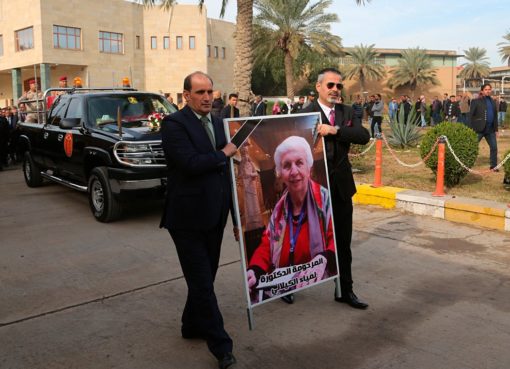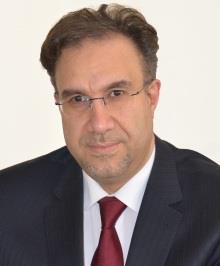In the land where history was first written, the complete erasure of over 8,000 years of cultural heritage, record, ethnic pluralism, and memory is underway. Although sidelined by the exigencies of war, those losses will impact Iraq’s potential to rehabilitate post-conflict. They represent an abrogation of a collective heritage: the world’s first legal code, writing system, and cities developed in Mesopotamia.
How can policymakers reverse this tragedy?
It is crucial first to appreciate the implications of what is being lost. Little attention has been paid to negotiating humanitarian and heritage crises as a single challenge that the state and its partners must confront. Attacks on places strike at sources of identity for the populations that make up Iraqi society.
The massive displacement of ethnically and religiously distinct communities is changing Iraq’s demographic fabric — and what it even means to be Iraqi. Media accounts focus on material destruction by extremist militant groups like IS (Islamic State), yet it is critical to remember that places derive their significance from the people who inhabit them.
Any solution must address both the artifactual and human destruction in Iraq today as a single process. This interpretation must be reflected in policy.
War and internecine violence have degraded the country’s diverse life pathways. More than 1,000 Yazidis flee their homes every month, heading to France, Germany, Turkey and Iran; this community may well disappear within the next five years if no steps are taken to ensure their security. Christian communities in Nineveh have evaporated, with the population dropping from over one million in the 1980s to 25,000 prior to IS’s June 2014 incursions into Iraq. Nearly 90,000 Sunni civilians fled their homes in Al-Anbar following IS’s advances in Ramadi and Fallujah. Suicide rates among these groups are rising precipitously, especially for young people.
Site destruction compounds displacement, erasing the physical records of ancient communities. It is impossible to protect thousands of Iraq’s heritage sites and the people that inhabit them with current resources. Of the estimated 4,000 archaeological sites identified in areas controlled by IS, including Nineveh, only 2% have been excavated. In Mosul, 42 heritage buildings have been demolished, along with 12 cemeteries. Hatra, Ashur Temple, Khorsabad, and Nimrod are lost or partially destroyed. In June 2014 IS levelled Mosul’s holiest sites: Nabi Yunis (Jonah), Nabi Jerjis (George), Nabi Sheath (Seth), Nabi Daniel, the 13th-century Shrine of Yahya Abul Kassem, and the Ottoman-era Hamou Qado Mosque. For growing diaspora communities, these sites represent the last links between displaced groups and their homes. Their removal from the country’s landscape is a crime against people, their memories, and the state to which they once belonged.
It is crucial to develop mechanisms to protect people and the places they inhabit. Policymakers in Iraq and abroad could confront the loss of Iraqi diversity using a four-pronged strategy that is sensitive to the ways in which people and places are intertwined.
First, the relevant authorities must protect ethnic and religious minorities and provide concrete guarantees for safe return to their homes once conditions permit. There is desperate need for adequate security force to ensure minority groups’ freedom of belief and their right to manage religious sites and practice their rituals.
Second, the Iraqi government with foreign assistance could raise public awareness of the Iraqi cultural heritage, Islamic and pre-Islamic. We need to bolster international support for protecting places of historical significance when authorities inside Iraq are understaffed, under-resourced, or otherwise unable to secure important heritage items. To support “hard” on-the-ground efforts we recommend passing legislation formalizing the status of antiquities and historical religious sites. (Policymakers might follow the model developed in the 2002 Law of Antiquities and Heritage No. 55, which aimed to preserve and expose Iraq’s antiquities and heritage as indicators of the country’s “contribution in the civilization of humanity”.)
Third, international organizations in partnership with local authorities should develop a systematic method for documenting all losses of physical heritage as a result of violence in a centralized database. These data might be used to formulate and issue a law to protect the rights of minorities to return to their hometowns and reclaim their properties, based on an identification of areas of highest need.
Fourth, the Iraqi government and Kurdistan Regional Government should promote education that dissolves barriers between differing elements of Iraqi society, emphasizing controversial and cross-sectarian issues. The ministry of education, in cooperation with local administrations and non-governmental organizations, could restructure curricula for elementary and secondary history and religion courses to reflect Iraq’s cultural diversity and heritage. The establishment of a national museum showcasing Iraqi diversity would also help.
These suggestions are not an idealistic call to protect objects in the face of a human tragedy, but a method by which to understand physical and population destruction holistically.
Authorities in Baghdad and the KRG must continue to confront security challenges posed by IS, and reconcile growing tensions within the Popular Mobilization Units (PMU) and Kurdish Peshmerga. But this effort cannot come at the expense of the social bulwarks that support a unified country.
It is true that few leaders in Iraq seem concerned by the fracturing of state-bonds, and this sentiment presents perhaps the greatest obstacle to protecting the country’s heritage or diversity. Certain groups seek to benefit from the current opportunities to grab land and property. Yet respect for diversity of thought, culture, and experience precludes stability and prosperity. While immediate power grabs and competitions might seem appealing to local and national actors, such actions will ultimately destroy the slivers of territory over which they are trying to consolidate power.
By achieving their aims through division and forced homogenization, the result can only be an interminable cycle of violence. The majority of Iraqis will be forced to pay the profits of a few. This is an unsustainable future.
Confronting diversity loss is a process that looks beyond a military defeat of IS to reestablish a sense of ownership over the state among disparate populations. For IS has inserted itself into sectarian, ethnic and religious divisions in Iraqi society. By addressing this exclusion policymakers can imagine a post-IS Iraq in which the state’s multiculturalism is a source of unity.
Ultimately there must be renewed commitment to Iraqi civil society. The Iraqi poet Adnan Sayegh lamented an “Iraq that is disappearing with every step its exiles take.” His words must serve as a warning lest they become prophecy.








Comment here